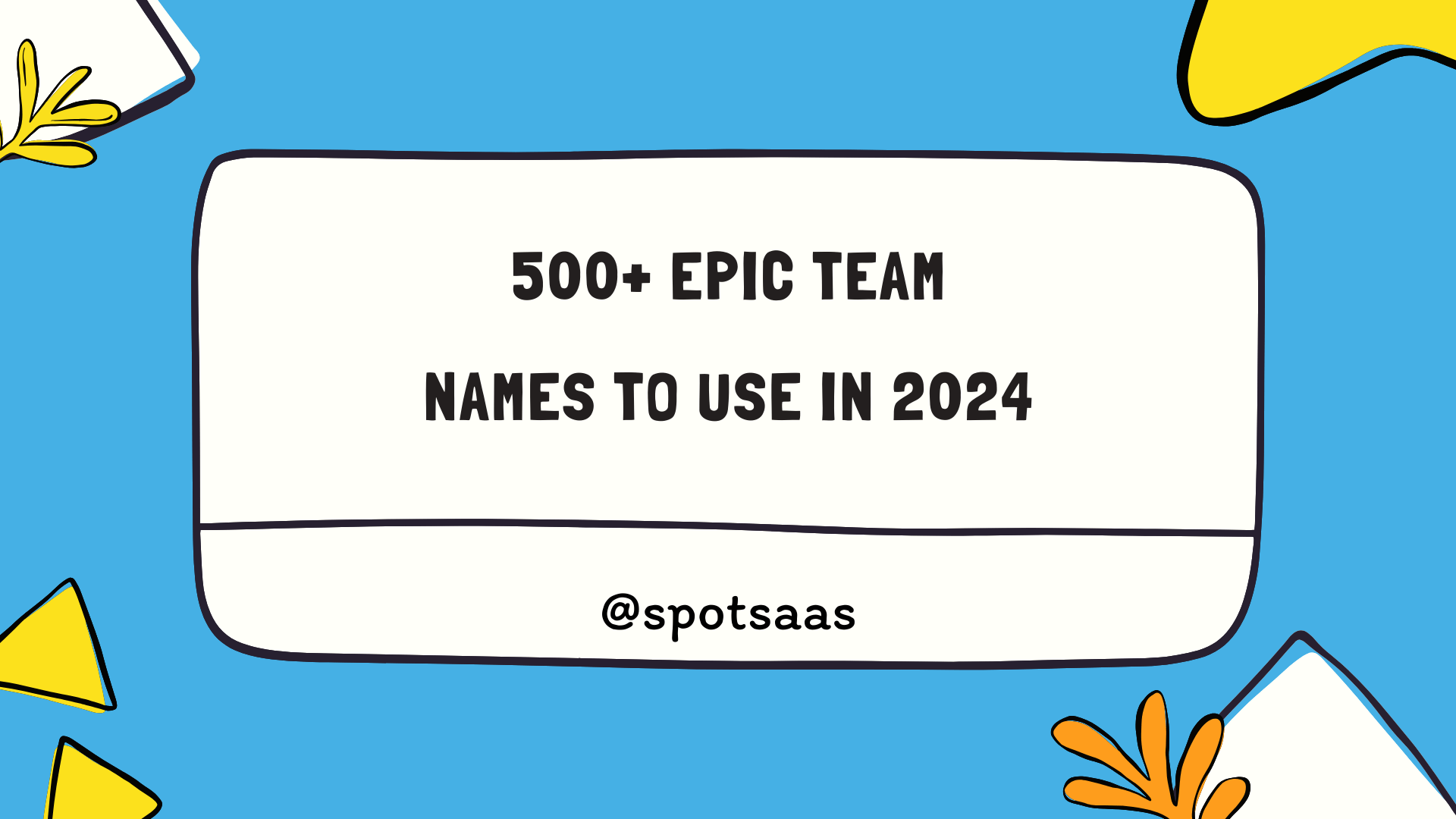How to Choose the Best Active Learning Tools in 2024
Active learning plays a key role in machine learning workflows, especially when dealing with large datasets. Unlike traditional methods that depend on large volumes of labeled data, active learning focuses on selecting the most valuable data points for labeling. This makes the learning process more efficient, lowers labeling costs, and boosts model performance with fewer labeled examples.
To choose the right active learning tool, it’s important to understand how it works, what features it offers, and how well it fits your AI workflow. This guide will walk you through the essential aspects of active learning tools in 2024, helping you make the best choice for your needs.
How Active Learning Tools Work
Active learning is a machine learning method where the model chooses the data points it is most unsure about and asks for help labeling them. By focusing on the data that it finds confusing, the model learns faster and improves more efficiently. This process involves the model actively seeking out the information it needs to get better, instead of relying on random data.
Here’s how the process typically works:
• Initial training: The machine learning model is trained on a small set of labeled data.
• Uncertainty sampling: The model selects the most uncertain data points from the unlabeled dataset using uncertainty measures such as entropy, margin sampling, or least confidence.
• Data labeling: The selected data points are labeled by a human or through automated methods, and these new labeled examples are added back to the training set.
• Model update: The model is retrained using the newly labeled data, enhancing its performance.
• Iteration: This process repeats in cycles, with the model continually requesting more data points as needed until it reaches the desired level of performance.
Active learning tools automate this process, making it easier to identify the most informative data and train models efficiently.
Common Features of Active Learning Tools
When selecting an active learning tool, there are several key features to look for. These features ensure that the tool can integrate seamlessly with your workflow and provide the necessary functionality:
| Feature | Description |
|---|---|
| Uncertainty Sampling Methods | The tool should offer a variety of sampling methods such as margin sampling, entropy-based selection, and least confidence to identify the most uncertain data points. |
| Automated Data Labeling Support | Some tools offer integrations with human-in-the-loop (HITL) systems or AI-based labeling tools to streamline the labeling process. |
| Data Management | Effective management of labeled and unlabeled data, including storage, retrieval, and versioning of data, is essential. The tool should provide features for tracking data points through the active learning process. |
| Model Retraining Capabilities | After new data points are labeled, the tool should easily integrate with machine learning frameworks to retrain models automatically. |
| Feedback Loops | A system that provides continuous feedback on model performance, label quality, and data selection efficiency is critical for refining the active learning workflow. |
| Scalability | Look for tools that can handle large-scale data operations and integrate with cloud-based infrastructures for distributed model training. |
Types of Active Learning Tools
There are several categories of active learning tools that serve different needs:
1. General-Purpose Active Learning Platforms
These tools are built to integrate into various machine learning pipelines and support multiple types of tasks such as classification, regression, and image recognition. They are versatile and work across different domains.
2. Domain-Specific Tools
Some active learning tools are designed specifically for certain industries or domains, like healthcare or finance, where specialized workflows and datasets are required.
3. No-Code/Low-Code Active Learning Tools
These tools are aimed at non-technical users or small teams. They offer an intuitive interface for setting up active learning processes without requiring extensive coding knowledge.
4. Open-Source Frameworks
Open-source active learning tools allow full customization and integration into custom machine learning pipelines. These are often favored by companies or individuals with strong technical expertise who need flexibility.
Benefits of Active Learning Tools
Active learning tools offer several benefits that make them appealing for machine learning projects:
• Reduced labeling costs: By selecting the most informative data points for labeling, active learning reduces the amount of labeled data required, thus cutting down on labeling costs and time.
• Improved model accuracy: Active learning enables models to learn more effectively from fewer examples, often resulting in better accuracy with less data.
• Optimized human resources: By focusing labeling efforts on the most impactful data points, active learning optimizes the involvement of human annotators, ensuring that their time is spent on the most critical tasks.
• Faster time to deployment: Since active learning reduces the amount of labeled data needed, it speeds up the overall model training and deployment process.
• Adaptability to different domains: Active learning can be applied to different machine learning tasks, such as text classification, image recognition, or speech analysis, making it a versatile tool.
Challenges of Active Learning Tools
While active learning tools offer numerous benefits, there are also challenges to consider:
• Initial model quality: Active learning requires an initial model to query for the most uncertain data points. If the initial model’s quality is too low, the active learning process may not be efficient.
• Complexity in implementation: Setting up an effective active learning pipeline can be technically challenging, especially in large-scale or complex environments.
• Data quality issues: Active learning relies heavily on high-quality labeled data for iterative improvements. Poor labeling or ambiguous data points can negatively impact the model’s learning process.
• Labeling bottlenecks: If human-in-the-loop labeling is required, it can become a bottleneck, especially for large datasets or complex annotation tasks.
Active Learning Tools vs. Reinforcement Learning Tools
While both active learning and reinforcement learning are techniques that aim to improve machine learning models, they serve different purposes:
| Active Learning | Reinforcement Learning |
|---|---|
| Focuses on selecting the most informative data points to label for training. It reduces the data annotation effort by focusing on uncertainty sampling and retraining the model iteratively. | Involves training agents to make decisions through trial and error by interacting with an environment. The agent learns by receiving rewards or penalties based on its actions. |
The key difference is that active learning is used to efficiently label data for supervised learning tasks, while reinforcement learning is about learning optimal actions in an environment.
Use Cases of Active Learning Tools
Active learning tools are used across a variety of industries and applications:
| Industry | Use Case |
|---|---|
| Healthcare | Used in medical imaging to label the most critical scans for diagnosing diseases, ensuring that radiologists spend time on the most challenging cases. |
| Autonomous Vehicles | Active learning helps autonomous systems label complex driving scenarios, improving object detection and decision-making in self-driving cars. |
| Natural Language Processing (NLP) | In NLP tasks like sentiment analysis, active learning helps in labeling the most uncertain or ambiguous texts, improving language models. |
| Manufacturing | Active learning is used to identify defects in quality control processes, ensuring that labeling efforts focus on products or components that are difficult to classify automatically. |
Pricing for Active Learning Tools
Pricing for active learning tools varies based on several factors, including:
| Pricing Factor | Description |
|---|---|
| Cloud-based vs. On-premise | Cloud-based solutions typically offer subscription models based on usage (e.g., number of labeled data points or compute resources), while on-premise solutions may have one-time license fees with maintenance costs. |
| Feature Set | Tools with advanced AI integrations, automatic labeling, and model retraining capabilities tend to be more expensive. Basic active learning tools or open-source frameworks can be free or lower-cost. |
| Enterprise vs. SMB | Larger organizations with complex workflows may require custom solutions or enterprise-grade platforms, which can range from $10,000 to $100,000 per year, while SMBs might opt for simpler, budget-friendly tools. |
Who Should Buy Active Learning Tools?
Active learning tools are ideal for:
• Data science teams: Organizations with large datasets but limited labeling resources can use active learning tools to optimize their labeling efforts and improve model performance with fewer labeled examples.
• AI startups: Startups working with limited budgets can benefit from active learning to reduce costs associated with data labeling and accelerate their machine learning projects.
• Research institutions: Academic and research institutions working on machine learning projects with sparsely labeled data can use active learning to focus their labeling efforts on the most informative samples.
• Healthcare, manufacturing, and autonomous systems: Industries dealing with critical applications where accuracy is paramount can benefit from using active learning to improve their models with selective labeling.
How to Choose the Right Active Learning Tool
When selecting an active learning tool, consider the following factors:
| Factor | Description |
|---|---|
| Integration with Existing Workflows | Ensure the tool integrates smoothly with your existing machine learning and data pipelines. |
| Ease of Use | Look for tools with intuitive interfaces or no-code options if your team lacks technical expertise. |
| Scalability | Choose a tool that can handle the size of your data and model training needs, especially if your project is likely to grow in the future. |
| Support for Labeling Platforms | If human-in-the-loop labeling is required, ensure that the tool supports easy integration with labeling platforms or AI-assisted labeling systems. |
| Cost vs. Features | Evaluate the cost of the tool against the features offered, ensuring it provides value for your specific use case. |
| Vendor Support | Look for a tool with reliable vendor support, especially if you’re working on mission-critical applications. |
Latest Trends in Active Learning Tools
Active learning tools are continuously evolving, incorporating new technologies and methodologies to improve the efficiency and effectiveness of machine learning processes. Here are some of the key trends shaping the future of active learning tools in 2024:
1. AI-Powered Labeling Assistance
Active learning tools are now using AI to help with labeling, making the process faster and easier. Instead of humans labeling all the data, AI systems can give the first set of labels, and then people check and correct them. This reduces the amount of work for human labelers and speeds up the active learning process.
2. Cloud-Native Solutions
Cloud-based active learning platforms are becoming more popular because they offer scalability, flexibility, and lower upfront costs. These platforms let businesses use powerful computing resources and store large amounts of data for active learning tasks without needing to spend a lot on their own hardware or infrastructure.
3. Automated Active Learning Pipelines
Automated pipelines are making it easier to add active learning to existing machine learning workflows. These pipelines take care of everything, from choosing uncertain data points to retraining the model. This simplifies the process and makes active learning more accessible, even for teams without advanced technical skills.
4. Collaboration with Human-in-the-Loop Systems
There’s a growing emphasis on human-in-the-loop (HITL) systems, where human annotators work alongside machine learning algorithms. The integration of these systems with active learning tools ensures that the most critical and ambiguous data points are labeled by humans, while the rest can be handled by automated systems.
5. Edge Computing for Active Learning
Edge computing is gaining traction in active learning, especially for real-time applications. By processing data closer to where it is generated (at the edge), models can be updated and retrained without relying on cloud-based systems, making the learning process faster and more efficient for certain use cases like autonomous vehicles or IoT devices.
6. Integration with Reinforcement Learning
Active learning is increasingly being combined with reinforcement learning (RL) to create hybrid systems. These systems can dynamically learn from both labeled data and interactions with their environment, making them more adaptive and capable of improving over time, even in changing conditions.
7. Explainable Active Learning
As AI models grow more advanced, people are looking for tools that make it easier to understand how these models work. Active learning tools now include features that explain why certain data points were chosen for labeling and how the model is getting better over time. This clarity helps users trust the AI and ensures it meets ethical and legal rules.
Conclusion
Active learning tools are crucial for businesses and organizations aiming to streamline their machine learning processes while cutting down on the time and cost of data labeling. These tools focus on selecting the most valuable data points, helping models learn faster, perform better, and need fewer labeled examples.
When picking the right active learning tool, consider factors like how well it integrates with your systems, its ability to scale, ease of use, and compatibility with labeling platforms. Whether you work in healthcare, manufacturing, or any other data-heavy industry, the right tool can speed up your AI projects and boost accuracy and efficiency.
To stay ahead, watch for trends such as AI-powered labeling, edge computing, and explainable AI, which are shaping the future of active learning tools in 2024 and beyond.




